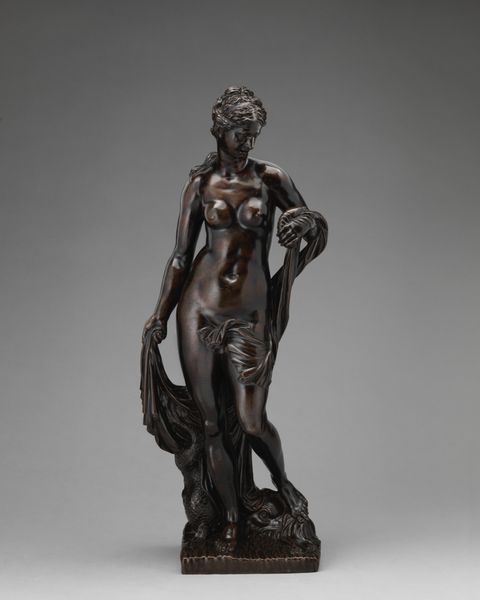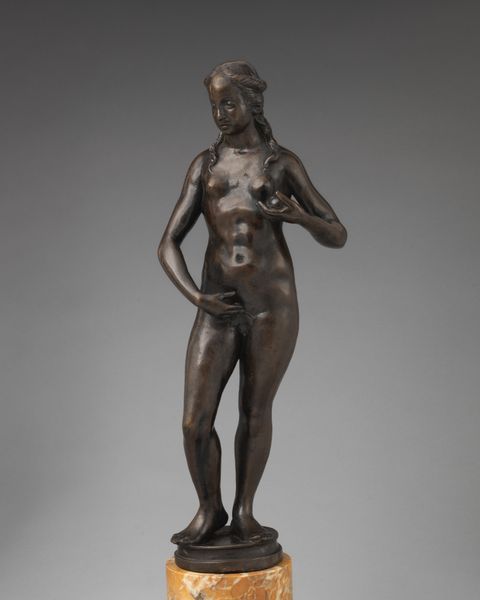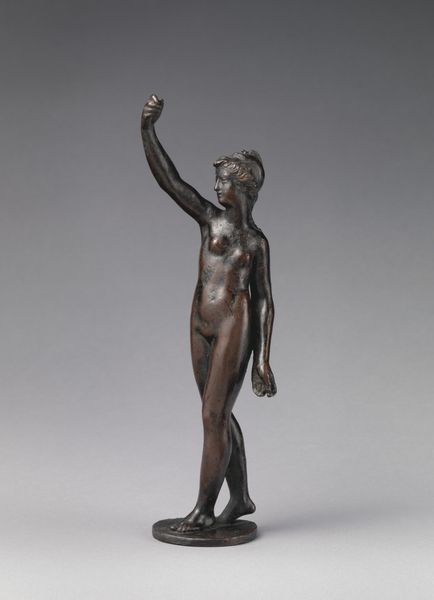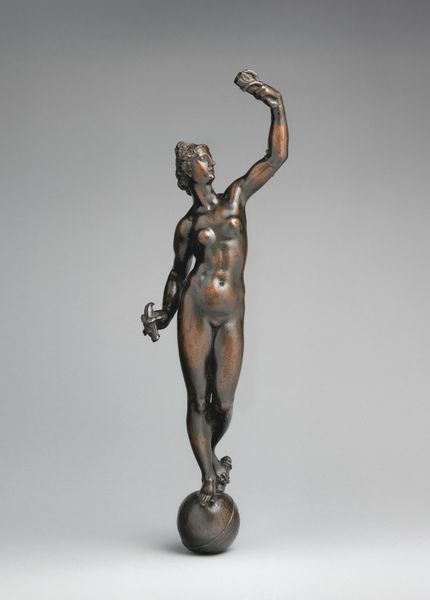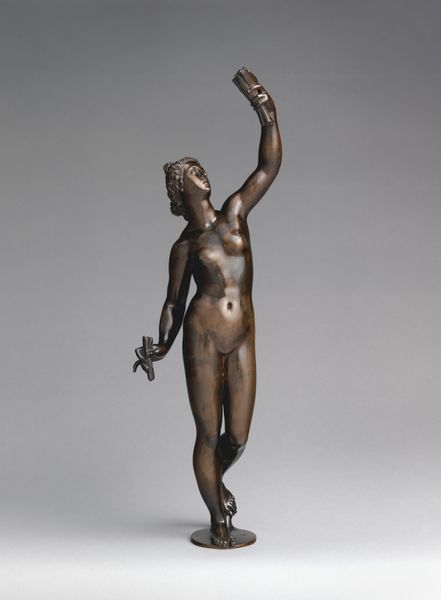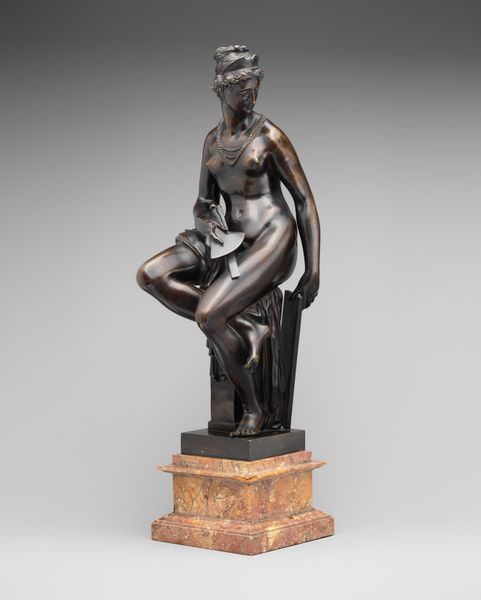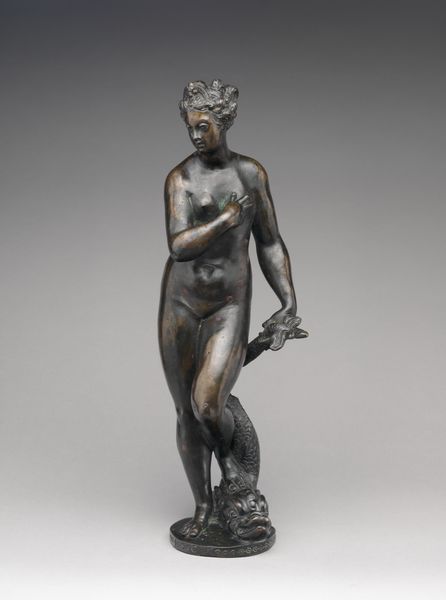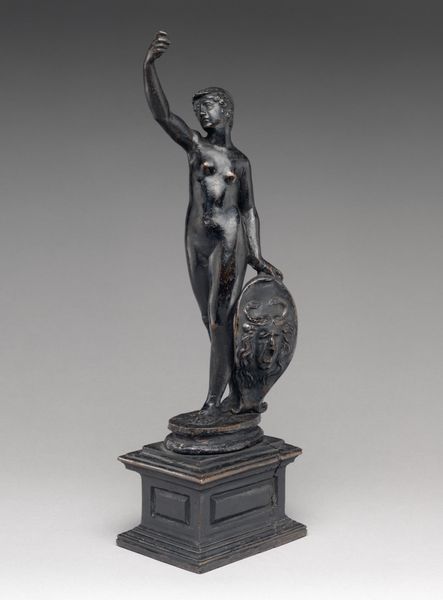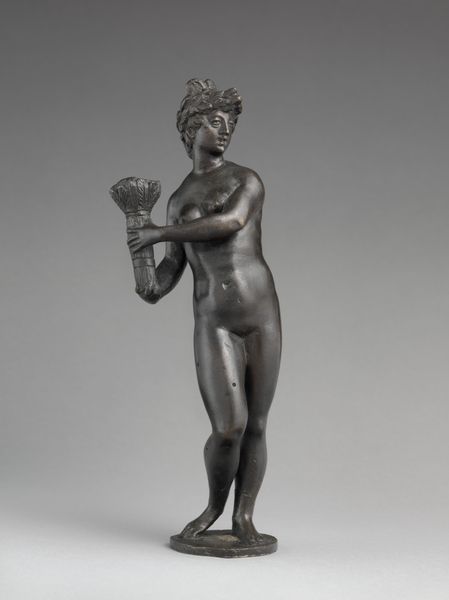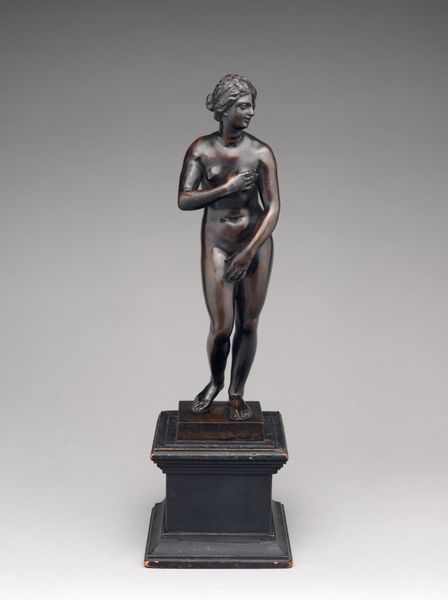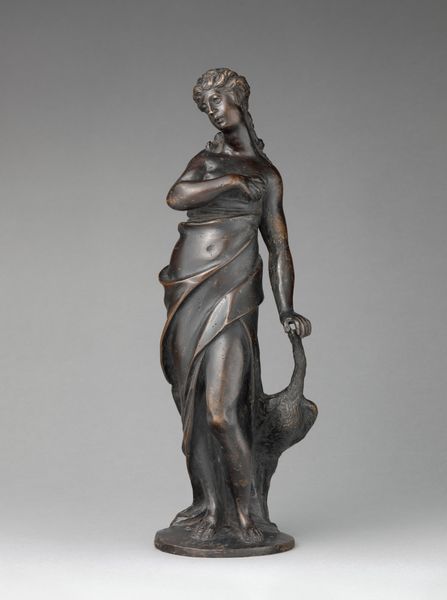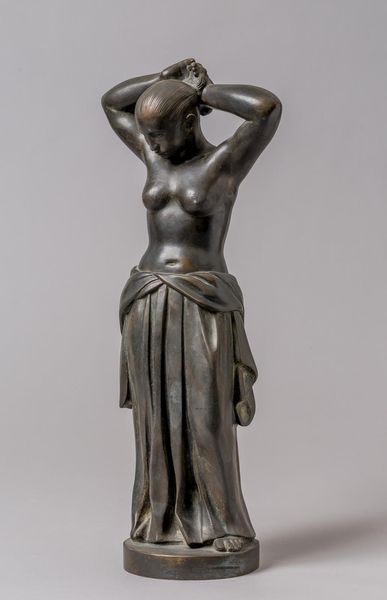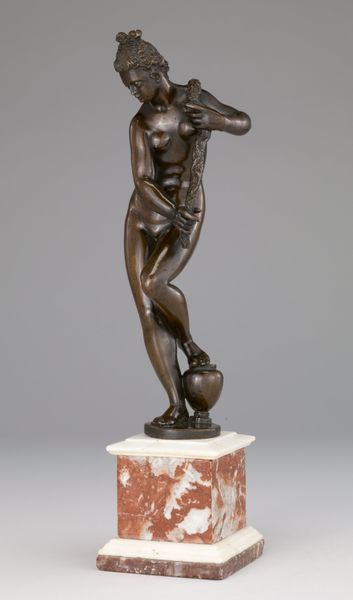
bronze, sculpture
#
classical-realism
#
bronze
#
figuration
#
11_renaissance
#
sculpture
#
decorative-art
#
italian-renaissance
#
nude
Dimensions: Overall (confirmed): 14 1/8 × 4 3/4 × 3 1/2 in. (35.9 × 12.1 × 8.9 cm)
Copyright: Public Domain
Girolamo Campagna created this bronze sculpture of Ceres in Venice sometime around the turn of the 17th century. Ceres, the Roman goddess of agriculture, was often used as a symbol of prosperity and abundance. Campagna made his career in Venice at a time when sculpture was dominated by the monumental forms of the High Renaissance. We can see this influence in the elegant contrapposto pose, the flowing drapery, and the idealized anatomy. However, by the late 16th century, Venice was also an important center of commerce, a place in which both art and artists were prized commodities. Ceres, in this context, speaks to the importance of trade in a city-state dependent on the sea. The classical subject matter, too, would have appealed to a refined, wealthy merchant class eager to align itself with the glories of the Roman past. These references to art history and Venetian society only scratch the surface. Further insight can be gained from letters, diaries, and estate inventories from this time. These provide invaluable information about the lives of artists and patrons, and the cultural institutions that shaped artistic production.
Comments
No comments
Be the first to comment and join the conversation on the ultimate creative platform.
